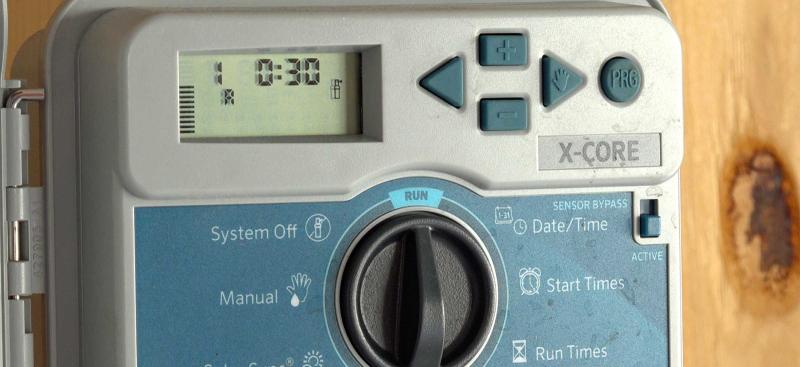Controller Settings
Set your irrigation controller to water wisely. Be sure to check your local water restrictions for irrigation start times and watering days.
- Irrigation Start Time: Only one start time is needed to initiate watering all irrigation zones. Check your local water restrictions for allowable irrigation times.
- Irrigation Run Time: This is how long each zone in your irrigation system will run. Check with your local UF/IFAS Extension office for run time recommendations. The table below provides general run time recommendations.
- Irrigation Schedule: It is recommended to only run your system one to two days a week and only if needed. Check local water restrictions for your watering day(s). Make seasonal adjustments to account for changes in temperature and rainfall, (see below for more information).
Setting Irrigation Run Times
According to the University of Florida’s Institute of Food and Agricultural Sciences (UF/IFAS), lawns only need one-half to three-quarters of an inch of water during an irrigation event, or when your lawn begins to show signs of drought. The below table provides general run time recommendations based on a two-day a week watering schedule by sprinkler head type and season. Less irrigation is required during the cooler months when plant growth is limited.
| Head Type | Setting | Summer | Fall | Winter | Spring |
| Spray | Ideal | 25 min | 15 min | 0 min | 20 min |
| Range | 23-30 min | 10-20 min | 0-10 min | 15-20 min | |
| Rotor and rotary nozzle | Ideal | 45 min | 30 min | < 10 min | 40 min |
| Range | 40-60 min | 20-40 min | 0-20 min | 35-55 min |
Conduct a catch can test to determine more precise runs times that are specific to your landscape and irrigation system. Follow the below steps to complete a catch can test:
- Place five to seven empty straight-edged cans (about the size of an average tuna can) at different locations throughout each irrigation zone.
- Manually turn on your irrigation system and let it run for 15 minutes.
- Turn off the irrigation system and measure the amount of water collected in each can.
- Calculate an average water depth for each irrigation zone and use that number to determine how long it will take to apply one-half to three-quarters of an inch of water.
Watch the video below to learn more:
Make Seasonal Adjustments
Make seasonal adjustments to account for changes in temperature and rainfall.
- Skip a week of irrigation in the cooler winter months of December through February when plant growth is limited and less water is needed. Turn your irrigation controller to the off position and turn it back on only when your lawn shows signs of stress or once every 10-14 days. Signs of stress include grass blades that do not spring back and leave footprints, appear blue-gray, or are folded in half lengthwise.
- Watch the weather and wait to water your lawn during the rainy season to account for natural rainfall. Turn your irrigation controller to the off position and turn it back on only when needed. If you have an automatic irrigation system, make sure your rain shut-off device is working properly.
Learn more about operating an irrigation controller by watching the video below.

